Bigfoot’s Monolithic Margins
Posted by: Loren Coleman on February 24th, 2007
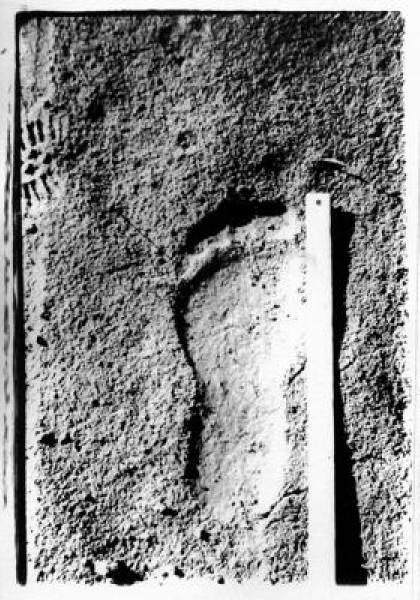
Part of the exercise here is to understand that in pursuit of good evidence leading to the verification of the reality, scientifically, of Bigfoot, we must build the best collection of Bigfoot footprints under the sun and throw out fake footprints on the way there. There is a point in our quest where it must be realized that nothing is beyond reproach and nothing is above reexamination, by us, by Bigfoot skeptics, by debunkers, by true believers, and by agnostics.
Even though I readily admit my pro-Bigfoot bias, I am not out to sell you on one side or the other. My desire is to truly get to the bottom of this, make certain that what we are looking at is the best evidence, and continue the search. If you do not accept Bigfoot as a possible real animal, you need not go further or farther down the metaphorical and real trails, because you have already made up your mind.
For me, the process is different. During all those years I’ve spent in the woods, searching since 1960, it was a common practice for those few of us out there to merely discard as we went along. In other words, if a track of a bear, a less-than-great imprint, an obvious human fake, or other prints that did not fit into the generally accepted “real Bigfoot” parameters presented itself, you didn’t cast it, photograph it, or share it. It was seen as a bad track.
Remember, as I wrote in an eariler blog, only the “best tracks” were kept when you did find the good Bigfoot tracks. We know now that was a mistake; post-Patterson-Gimlin footage, trackways are cast. However, in general, simpler logic – why cast obvious prints that look like pranks or your cousin’s barefooted track – was used pre-1967 to home in on “what looked like” the most genuine Bigfoot imprints. Resources were limited also, and plaster of Paris seemed expensive when you were doing this on your own.
Lots of stuff was examined and thrown out for years, even before we got home. There was a woodcraft awareness, clarity, and casualness about it. But then, Bigfoot fans from the 1950s-1960s weren’t running back home and posting their latest weekend camping trip as another “expedition,”as you see on the web today. I’m older, who knows if I am wiser, but like many others, I have seen the field evolve, sometimes for the better, sometimes not so much.
In the age of the internet and the explosion of interest in Bigfoot, of course, it seems everything found is being collected – both the good and the bad – the fakes and the other animals – because finding Bigfoot tracks is “so cool.” Anyone can and is a Bigfoot hunter. The upside is that there are more eyes. The downside is that there are less discriminating eyes. The other part of the modern upside is that there are more critical thinkers too.
Additionally, therefore, with the mass interest too, everything is being reexamined and reviewed based on new revelations, as it should be, by more people. Some of this includes the discovery of hoax incidents from the past, which should be expunged from the present database, in spite of personalities and defensiveness. For those of us that consider Bigfoot an undiscovered primate, there should be no fear here, but an open-armed and open-minded welcoming of such new discoveries, so the data is truly “good.”
Grover Krantz use to talk about a “secret list” of indicators he had, so he could tell a real track from a fake one. Well, we know that despite this list, Krantz was human and some hoaxes slipped into his collection. There are no longer secret lists, but a more open and free sharing of trying to throw out the fakes, include the possibles, as it should be.
In line with this more modern approach, I have been given permission to share with you Matt Crowley’s short essay on “Fake Feet and ‘Monolithic Margins.'”
The set of fake feet seen here I made using a rigid two part urethane casting compound. Believe it or not, I didn’t actually set out to duplicate the morphology of the known Wallace prosthetic; it more or less just came out that way.
What becomes interesting is the morphology of the toes. I sculpted a large foot shaped track in potters clay then poured liquid urethane into the track about half way. When that was semi-cured, I embedded an old shoe and filled in more liquid urethane. The toes on my prosthetics on the plantar surface are quite well defined. But on top, on the dorsal surface, the prosthetic is “monolithic”, in the sense that the cleft between the toes does not extend from the plantar surface through to the dorsal surface. This sounds like a trivial detail, but the results may surprise you. Note that I made small cuts at the leading edge of the fake feet; I intended to hog out the cured urethane between the toes, but I lost interest. I took my fake feet to the banks of the Duwamish river mud flats and made some fake tracks.
Note that when the track is shallow, the toes are fairly well defined and the leading (anterior) edges of the toes are rounded. Now notice what happens when the same prosthetic is pressed rather deeply into the mud:
Yes, I know I’m comparing a left and a right, and this is because I didn’t notice the effect until I got home and looked at the photographs. I’ve got a clearer example up ahead. And indeed, both my right and left prosthetics show this effect. Note how when pressed deeply enough, the track exhibits a “monolithic margin” or an unbroken arc at grade which represents where the leading edge of an unbroken object made contact with the soil. The leading edge of each individual toe at grade becomes straighter.
Here is a close up of what the toes look like when I press my prosthetic deeply into fine, dry powder:
But lets get back to the business at hand: look closely at the wood prosthetic that Dale Wallace is holding in his right hand, the one with the dorsal surface facing the camera. Notice how the toe clefts seen on the plantar surface do not extend through to the dorsal surface? Now look again at the famous “page 77” track photo: we see a “monolithic margin” in the track!
Some months back, I put out a challenge on Bigfoot Forums to anyone who could find a photograph of a track from a known primate that exhibits the same morphology. My suggestion seemed to befall the same fate as David Hume’s Treatise of Human Nature in that it “fell dead-born from the press”. No one took me up on the challenge. I’ve never seen a human track that exhibits anything but scalloped margins, as real humans with real toes produce real tracks, and all the real tracks I’ve ever seen have scalloped margins. I cannot prove that a track with a “monolithic margin” is always fake, but I can demonstrate that such a track morphology is consistent with what a Wallace style foot prosthetic produces.
The “page 77” track is not an isolated event. On Page 76 of Apes Among Us, Green posts a photograph with the caption “A 13” track driven into a sand and gravel bar on Bluff Creek” Note that 13” is the length of the “Onion Mountain” cast in question, the one Jimmy Chilcutt claims exhibits Bigfoot’s dermal ridges. But we need to be careful here, as this track may not have come from the August 1967 Blue Creek Mountain – Onion Mountain trackway. From all the photos and written accounts, that trackway was in fine dust on a roadway. The “Page 76” track looks like a different substrate. But again, specificity in these matters is maddening, so I leave it at this; the following track is 13” long and resembles in gross morphology the cast in question that has been claimed to exhibit “dermals.”
Photo from page 76 Apes Among Us with caption “A 13″ track driven deep into a sand and gravel bar on Bluff Creek.”
A characteristic also seen in this photo from page 76 is the deep impression that the toes make and not the ball of the foot. Since toes are hinged, most tracks made with feet that have toes show the deepest impression at the ball of the foot, and not the toes. But what we see here in the “sand and gravel bar” photo is entirely consistent with what rigid fake feet often do, and that is digging in at the toe area. Compare the page 76 photo with what we see my Wallace style fake foot doing here:
And a close-up of the toe area:
In both my own fake track and Green’s track we see an unusual amount of “digging in” of the toes and very little indentation of the ball of the foot.
Note that Green himself observes the track was “driven deep” into the substrate. Indeed, this seems to be a necessary condition for the “monolithic margin” to appear. What can I say, just look at the toes! The anterior toe margin is monolithic in the same way that my own fake foot is. This feature alone is a huge red flag that the track is fake.
So before we look at the minutea of the dermal ridge business, we need to assess if the tracks from which the cast was made were made by Bigfoot at all.
When Ray Wallace died, a certain “circling of the wagons” occurred, led by John Green himself. Jeff Meldrum devotes a whole chapter in his new book in an attempt to counter the Wallace family claims. One of the favored tactics to discredit Wallace is to say that he was a crackpot, or even flat out nuts. Indeed, Green has posted letters he received from Wallace over the years that show this. Even skeptics like Mike Dennett will concede that Wallace was more or less delusional. But none of this invalidates his ability as a woodworker! Indeed, my own meager efforts at woodworking fall far short of the known prosthetic. Try it yourself if you don’t believe me!
The Advocates are let into an uncomfortable position in attempting to “explain away” the obvious morphological similarity with the known Wallace prosthetic and the “Page 77” track. They have to claim that Wallace fabricated his prosthetic as a copy of the track photo! If so, how did Wallace come to understand the subtleties involved in emulating the “monolithic margin”, especially if he was mental? Sorry guys, I don’t buy it.
I think the answer is dead simple; Wallace was a good woodworker and sculptor, but not a great anatomist. Some of his prosthetics contained the anatomically questionable “double ball” feature, and he failed to cut his toe clefts all the way from the plantar surface to the dorsal surface, thus leaving a subtle “tell” in the form of a “monolithic margin” in his tracks. His carved feet do not appear to be bilaterally symmetrical, and neither do the clearest of the tracks photographed by Green and Hooker. It seems strange to me than nearly 40 years have gone by, but no one seems to have noticed that the tracks did not exhibit bilateral symmetry! This alone should cast strong doubts on the trackway as having been made by the feet of a living animal.
What is the bottom line here? I cannot prove the tracks are fake, yet the Blue Creek Mountain – Onion Mountain trackways exhibit multiple signatures of Ray Wallace hoaxing. With these enormous “red flags” why do the advocates persist in claiming that “Wallace didn’t do it”. Well, ego is a big reason. If the tracks are fake, then Green and Dahinden were fooled, and fooled badly. Fooled by a known crackpot, and that’s gotta hurt.
So back to condition three; By no means have the advocates proven that Bigfoot made the Blue Creek Mountain – Onion Mountain trackways, a necessary condition for the cast in question to exhibit Bigfoot’s dermal ridges.Matt Crowley, Fake Feet and “Monolithic Margins”
About Loren Coleman
Loren Coleman is one of the world’s leading cryptozoologists, some say “the” leading living cryptozoologist. Certainly, he is acknowledged as the current living American researcher and writer who has most popularized cryptozoology in the late 20th and early 21st centuries.
Starting his fieldwork and investigations in 1960, after traveling and trekking extensively in pursuit of cryptozoological mysteries, Coleman began writing to share his experiences in 1969. An honorary member of Ivan T. Sanderson’s Society for the Investigation of the Unexplained in the 1970s, Coleman has been bestowed with similar honorary memberships of the North Idaho College Cryptozoology Club in 1983, and in subsequent years, that of the British Columbia Scientific Cryptozoology Club, CryptoSafari International, and other international organizations. He was also a Life Member and Benefactor of the International Society of Cryptozoology (now-defunct).
Loren Coleman’s daily blog, as a member of the Cryptomundo Team, served as an ongoing avenue of communication for the ever-growing body of cryptozoo news from 2005 through 2013. He returned as an infrequent contributor beginning Halloween week of 2015.
Coleman is the founder in 2003, and current director of the International Cryptozoology Museum in Portland, Maine.

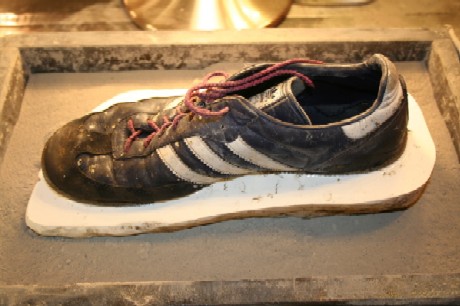
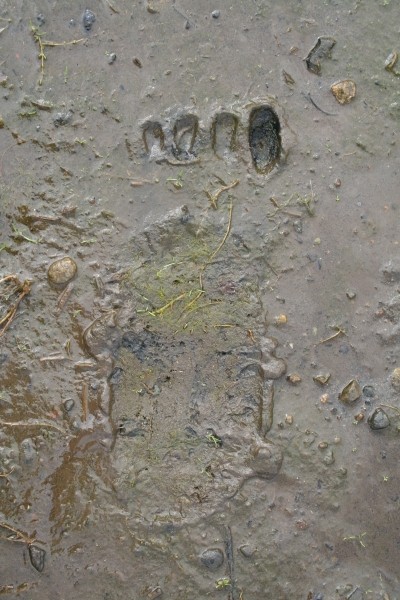
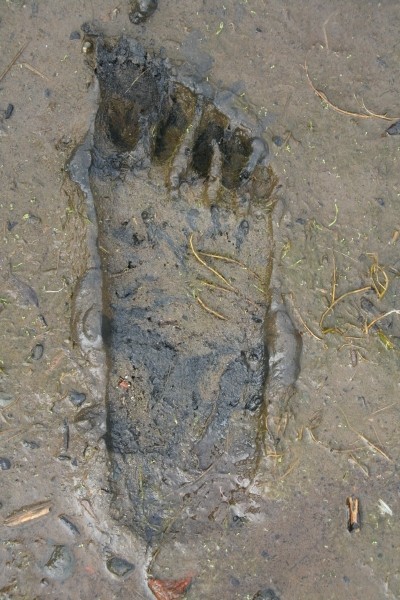
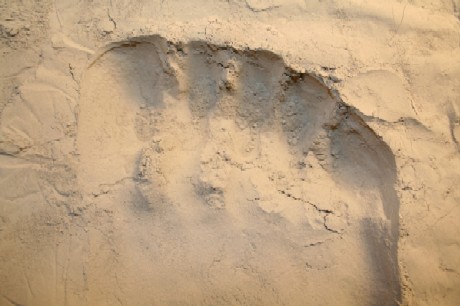
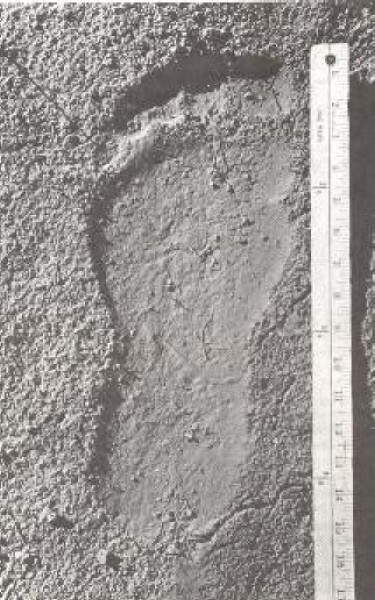
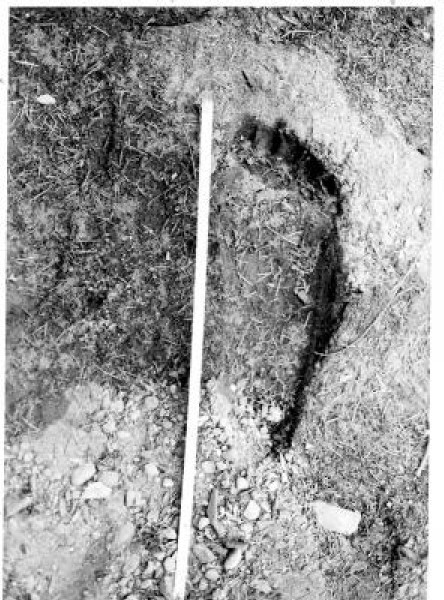
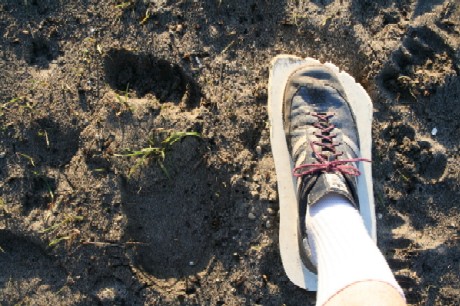










More good, convincing stuff.
Again I stress, as Loren stresses- weeding out the more obvious hoaxes only strengthens our credibility. It is a shame that in cryptozoology (as in all activities) people are so afraid to admit they were wrong, it does them and us no favours at all.
Having said all that, I’m not sure I agree with Loren that things were better in the golden old days (if that is what he’s saying- perhaps I read that wrong) when people made judgments on their own in the field about what constitutes a good track.
In my opinion that introduces too much bias, and risks producing self-fulfilling theories (I think bigfoot should have feet like this, so I will only record tracks that look like this). Despite all the problems associated with lots of clearly faked or mistaken tracks being produced and claimed as evidence, I think it is far better to put all possible tracks out in public view and let us subject them to ‘peer review’ as Loren and Matt have done here.
I think that more eyes = better eyes, simply because there are inevitably more good ones. It’s not like the trackways are increasing to keep up with the eyes; it’s more people looking at a database that doesn’t exactly increase exponentially by the year.
Like Crowley for instance. This guy simply wasn’t around for this in the sixties and (I don’t think) the seventies. But he’s sure made me rethink my drink on track authenticity.
But here’s the bottom line: without a type specimen, it may be as hard in the end to earmark “fake” as to earmark “genuine.”
Not that we shouldn’t try. Amateur debunkers will increase the credibility of amateur Bigfooters in the long run. (Or not, if this is all hoaxery, as big a stretch as I think that is.) I’m just glad there are so many OTHER folks out there willing to split hairs on the track debate. I like to discuss the animal, personally. 🙂
Great use of the scientific method here…something all those involved with Bigfoot Studies, whether believer or skeptic, need to always keep in mind in every specific instance.
I agree with things-in-the-woods on this too: The good old days. They weren’t better.
The internet has allowed fools to rush in for sure. It’s also exponentially increased informed discussion, and puts the dreck out on the back stoop very quickly. That bias thing can’t take such a hold now, because biases get more scrutiny. Info exchange happens almost instantaneously; you get the colossal squid shot and the chimp spear as they happen, almost. More opinions, and better ones, get to more people faster.
There are still some egregious biases out there (like Bobbie Short thinking it’s a hominid and not an ape on the feet alone). Heck, she may be right. But now we can shed more light, quicker.
The ultimate light, of course, being still to come.
This is exactly the sort of thing cryptozoologists need to do to strengthen their credibility with the scientific establishment.
Anymore of this objective, dispassionate and empirically based criticism of cryptozoology in general and bigfoot in particular and the field might rightfully be accused of becoming a science, at least tangetially, if we mean science as a method of investigation.
DWA- I agree. I also believe that it could quite possibly be tough to tell a good fake from the real thing considering there is no undisputed holotype for what a real one should look like. With the Wallace prints, we have that line to go by, but it may not be easy with other fake prints made by a very determined hoaxer. The examination of foot pressure and dermal ridges are a good start but it is still going to be tough to tell by footprints alone. I also agree with things-in-the-woods in that the “old fashioned way” could create a type of bias when looking at tracks.
I feel there is a lot riding on the future credibility of cryptozoology as to whether we can discount hoaxes and focus on the more reliable evidence to be found and this may have to involve coming up with more scientific standards by which to judge tracks, etc. In my opinion, there has been more of a tendency to think this way within the field. In this sense, I personally feel that absolutely Bigfoot researchers as a whole are getting better at sifting out these hoaxes and pranks. In addition, the widespread use of the net can also help in that these hoaxes that are found are quickly passed along before too much misinformation can spread. For the most part, I think the people that seriously study Bigfoot are becoming much more discriminating with what they find and that the field for the most part has made changes for the better. A more scientific approach to the evidence is becoming more widely embraced and I feel this is going to do a lot towards the perception of cryptozoology as a legitimate science. Just in the time I’ve been on this blog, I’ve seen a shift for the better, more of a sort of willingness to question the evidence presented and look at it from a more skeptical viewpoint without being immediately taken in. I wish the hoaxes would stop, but I do not think that is likely to happen anytime soon so it is important to expunge this stuff from the datapool and make efforts to scientifically determine what constitutes a fake.
Very interesting.
I think what it comes down to is that, regardless of how compelling indirect evidence such as footprints may be, the existence of a previously undescribed animal cannot be confirmed except by examination of the animal itself.
The people who go out and fake tracks for what ever reasons when discovered should be publicly treated in court for some type of legal violation since time and money is spent by others to investigate and search those areas for the animal. When that starts to happen then the tracking will yeild more results. This is tough to do without crackpots and other types messing around with the evidence or making evidence.
I am not impressed with “too perfect” tracks especially if they are not connected with a credible sighting. However, if I am 40 miles into the Bob Marshall wilderness, then I’m very impressed if I come across tracks.
There are simply too many hoaxers out there, and I’m convinced that the real creature makes every effort to avoid leaving tracks if it can. So tracks to me are a curiosity and only serve to make me keep my eyes open a little wider.
Joppa has a good point. As they say in real estate: “Location, location, location!” Tracks that are encountered where few people go are proportionately more likely to be real. That I think is good acid test. We never will know for sure if any track is real unless we see the creature making it.
Maybe I’ve just got a cynical nature, but one downside to all of this discussion is that, were I a hoaxer, I would pay a lot more attention to my cast now and have a better idea how to make it look real.
I did not think this would be such an emotionally charged issue. But then again I did not spend my life looking for the Boss of the mountains. And only to find that thirty percent of my finds were possible fakes. A life wasted…..No a life lived!
There do seem to be quite a few tracks which do have that scalloped edge, by the way. Whatever seperates the wheat from the chaff.
Yea I was also confused about all the talk around Wallace tracks in the Meldrum book.
Personally, who cares?
My opinion.
Scrap all suspect tracks to date and start anew.
I know Matt has stated he thinks all the Bluff Creek area tracks were faked, presumably with Wallace feet, but according to Loren Coleman’s obituary, Ray moved to Toledo, Washington in 1961.
The Blue Creek/Onion Mountain event occurred in 1967.
Where was Ray Wallace in 1967?
Wallace owned a construction company that had contracts throughout the Pacific Northwest, relatives who lived from California to Washington State, and was wealthy enough to travel. Actually, apparently Wallace was rather well-to-do, as his company earned him a good fiscal foundation from which he could have taken trips far and wide.
There is no negative evidence to the fact he was not in the Blue Creek-Onion Mtns area during the summer of 1967. Also, his prankish associates and relatives could have carried out these hoaxes just as well as Wallace.
Re: this quote from Crowley:
————————————-
What is the bottom line here? I cannot prove the tracks are fake, yet the Blue Creek Mountain – Onion Mountain trackways exhibit multiple signatures of Ray Wallace hoaxing. With these enormous “red flags” why do the advocates persist in claiming that “Wallace didn’t do it”. Well, ego is a big reason. If the tracks are fake, then Green and Dahinden were fooled, and fooled badly. Fooled by a known crackpot, and that’s gotta hurt.
So back to condition three; By no means have the advocates proven that Bigfoot made the Blue Creek Mountain – Onion Mountain trackways, a necessary condition for the cast in question to exhibit Bigfoot’s dermal ridges.
—————————————-
Well, the take-home from this is that advocates CAN’T prove that Bigfoot made the tracks.
Green and Dahinden (and Krantz and Meldrum, maybe to a lesser extent) have been trying too hard to “prove positive” when there’s no way to do that. If the tracks are putatively sas tracks, the angle to take, if obvious hoax markers aren’t present, is to assess the place and conditions, and extrapolate from there to the LIKELIHOOD of a hoax.
Crowley’s big contribution has been to open people’s eyes to the impossibility of proving the provenance of the tracks, regardless what markers they show. Jimmy Chilcutt may be better than me. But why isn’t the world following his lead?
Tracks can lead us there. And fake tracks are dead ends. So it’s good to recognize fakes.
But also to remember that a real good fake could also just be a real good sas track.
On the other hand, if we finally catch a Bigfoot, it could turn out that their feet exhibit this ‘ monolithic margin ‘ ..
Can’t be for sure till we nab one ..
Another idea that may have relevance here is one I read recently (wish I could remember who):
Any animal will, sooner or later, make a good likeness of ANOTHER animal’s track.
Some of these “fake” earmarks could be actual track artifacts, just like they could be hoaxes.
Not to say, mind you, that the same things showing up in known hoaxed tracks shouldn’t be viewed with suspeicion ’til provenance can be proven.
The key point will always be: NEVER say it could not have been faked. Just that circumstances – and this is always more than the track itself – say that’s either likely, or it’s not.
Didn’t the Wallace family try to claim Ray was sending people out with fakes when the story began to fall apart? Was that before or after the towing trick was tried?
Wallace “could” have been there, but there’s no evidence he was? He was living in Toledo, then? Is that correct?
The Wallace family got their fifteen minutes of fame and their film deal; let it die.
If truth is what withstands attempts at falsification, then the more falsification-filters we apply, the more credible the evidence the makes it through. (On a relativistic degrees-of-maybe-ism continuum, whose end-points are wherever you’d like to set them.)